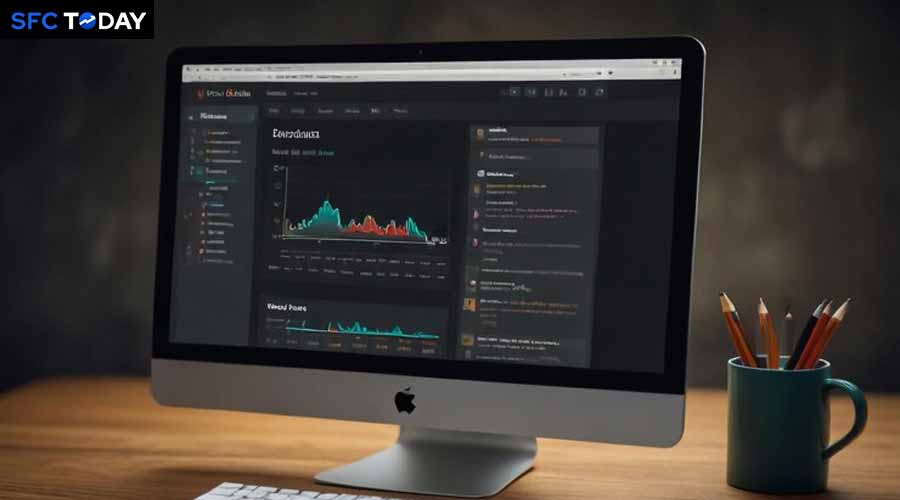Future trends and innovations in stock trading bots
Stock trading bots, also known as algorithmic trading systems, have revolutionized the financial markets by automating the process of buying and selling stocks. These bots leverage artificial intelligence (AI) and machine learning to analyze data, identify trading opportunities, and execute trades with precision and speed. As technology continues to advance, the capabilities and applications of stock trading bots are expanding, offering new opportunities and challenges for investors.
Innovations in Stock Trading Bots
- AI and Machine Learning Integration
The integration of AI and machine learning has significantly enhanced the functionality of stock trading bots. These technologies enable bots to analyze vast amounts of data, recognize patterns, and make predictions with high accuracy. AI-powered bots can adapt to changing market conditions and continuously improve their trading strategies. For instance, advanced machine learning algorithms can learn from past trades and market data to refine their decision-making processes, leading to more effective trading strategies. - High-Speed Trading
One of the key advantages of stock trading bots is their ability to execute trades at high speeds. In the financial markets, milliseconds can make a significant difference, and bots are designed to capitalize on these small windows of opportunity. This high-speed trading capability allows investors to gain a competitive edge and maximize their returns. Bots can process and execute trades faster than human traders, which is crucial in high-frequency trading environments where timing is everything. - Backtesting and Risk Management
Modern trading bots come equipped with backtesting capabilities, allowing investors to test their strategies against historical data. This feature helps in refining trading strategies and minimizing risks. Additionally, bots can implement risk management rules, such as stop-loss orders, to protect investments from significant losses. By simulating trades based on historical data, investors can evaluate the effectiveness of their strategies before applying them in real time, thus reducing the potential for financial loss. - Diversification and Portfolio Management
Trading bots can manage multiple assets simultaneously, enabling investors to diversify their portfolios effectively. By continuously monitoring market fluctuations, bots can adjust holdings and optimize investment strategies. This diversification helps in spreading risk and improving overall portfolio performance. For example, bots can automatically rebalance portfolios based on market conditions and investment goals, ensuring that asset allocation remains aligned with the investor’s strategy. - User-Friendly Interfaces
The latest trading bots are designed with user-friendly interfaces, making them accessible to both novice and experienced traders. These interfaces provide intuitive controls, real-time data, and customizable settings, allowing users to tailor the bots to their specific trading preferences. With simplified setup processes and easy-to-navigate dashboards, traders can quickly get started with automated trading and adjust settings according to their needs.
Future of Stock Trading Bots
- Enhanced Predictive Analytics
Future developments in AI and machine learning are expected to further enhance the predictive capabilities of trading bots. Advanced algorithms will be able to analyze more complex datasets and provide even more accurate market forecasts. This will enable investors to make more informed decisions and improve their trading outcomes. With the integration of more sophisticated analytical tools, bots will be able to predict market trends with greater precision. - Regulatory Developments
As the use of trading bots becomes more widespread, regulatory bodies are likely to introduce guidelines to ensure market transparency and fairness. These regulations will aim to prevent market manipulation and protect investors from potential risks associated with automated trading. Regulatory frameworks will need to evolve to address the complexities introduced by algorithmic trading and ensure that trading bots operate within legal and ethical boundaries. - Integration with Blockchain Technology
The integration of blockchain technology with trading bots could offer new possibilities for secure and transparent trading. Blockchain can provide a decentralized and tamper-proof ledger for recording transactions, enhancing the trust and reliability of automated trading systems. This combination of blockchain and trading bots could lead to more secure trading environments and improved transparency in financial transactions. - Increased Accessibility
The future of trading bots will likely see increased accessibility for retail investors. As technology becomes more affordable and user-friendly, more individuals will be able to leverage automated trading systems to manage their investments. This democratization of trading technology will empower a broader range of investors, providing them with tools previously available only to institutional traders. - Ethical Considerations
The rise of AI-powered trading bots also brings ethical considerations to the forefront. Issues such as data privacy, algorithmic bias, and the impact on employment in the financial sector will need to be addressed. Ensuring that trading bots are used responsibly and ethically will be crucial for their sustainable development. Stakeholders must work together to establish guidelines and best practices that promote ethical use and minimize potential negative consequences.
Conclusion
Stock trading bots represent a significant innovation in the financial markets, offering numerous benefits such as high-speed trading, risk management, and portfolio diversification. As AI and machine learning technologies continue to evolve, the capabilities of these bots will expand, providing new opportunities for investors. However, it is essential to navigate the associated challenges and ethical considerations to ensure the responsible and sustainable use of trading bots in the future.







